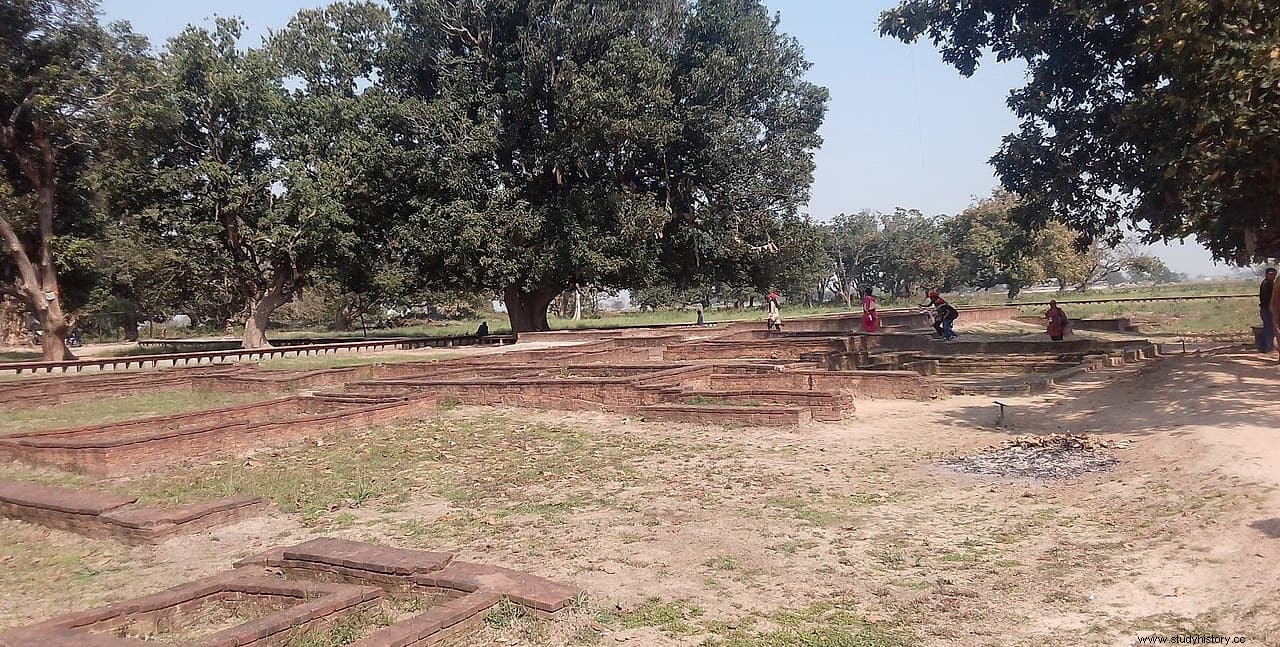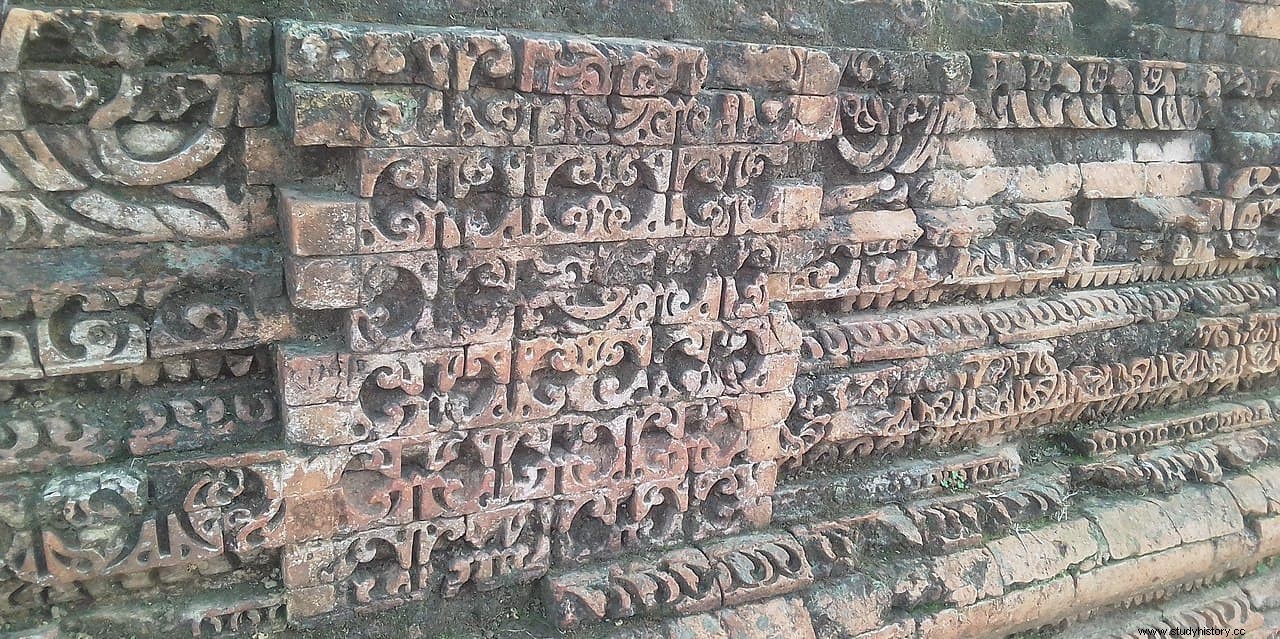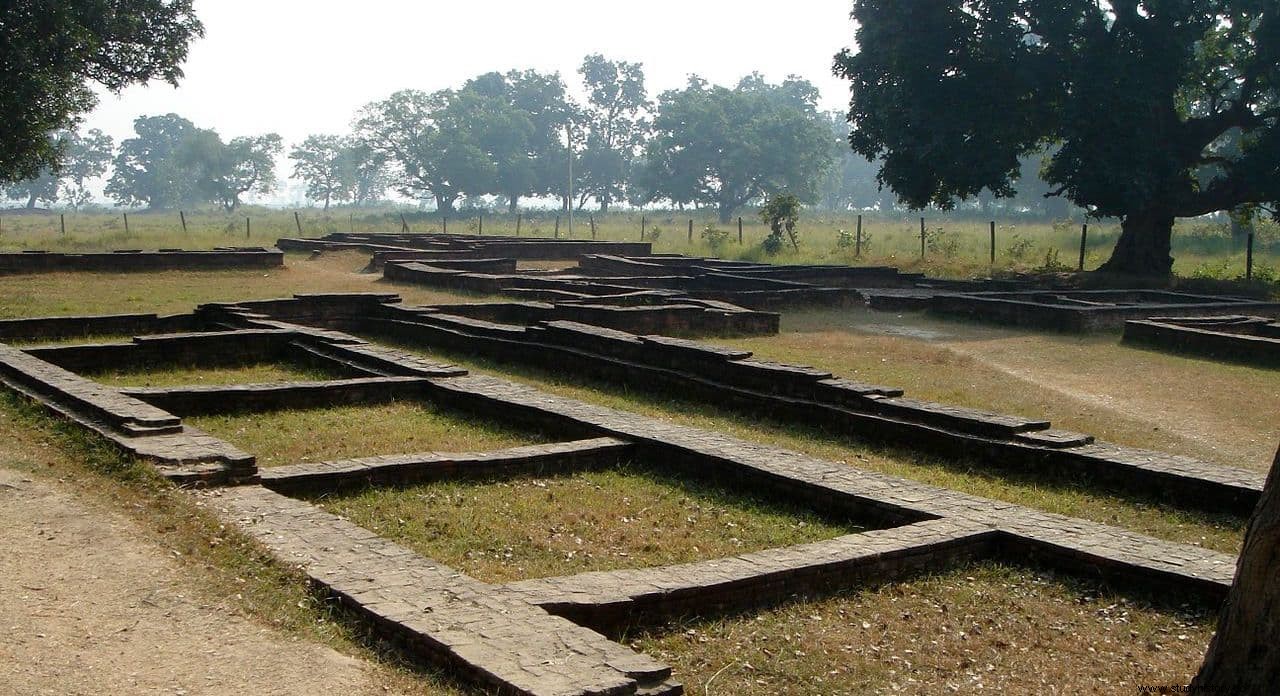According to the tradition of various Buddhist texts Siddharta Gautama, the future Buddha, lived in the palace of King Suddhodana and Queen Maya, his parents, until the age of 29. The palace was located in the capital of the Sakya clan, called Kapilavastu.
Siddharta Gautama left the palace and the city around the year 534 BC, more or less at the same time that King Servius Tullius was assassinated in Rome and Tarquinius Superbus ascended to power, and in Athens the first contest of tragedies was organized in the festivals dionysias Some 50 years later the city of Kapilavastu was destroyed by the Kosala king Virudhaka.

The place became the main center of Buddhist pilgrimage for a thousand years, receiving visitors from all over Asia. Chinese monks Faxian and Xuanzang, who visited in the 5th and 7th centuries AD. respectively, they left accounts detailing their trip and visit.
But by the 19th century the exact location of Kapilavastu had been lost. The reasons are to be found in the scant interest of the Hindu and Muslim rulers of India and Nepal in perpetuating his memory, coupled with the decline in the influence of Buddhism.
In 1896 the German archaeologist Alois Anton Führer, hired by the governor of the area, found a pillar erected by Emperor Ashoka in 249 BC. in which an inscription marks the birthplace of Buddha. The pillar, about 6 meters high, appeared in the Lumbini grove (a town located in southern Nepal, almost on the border with present-day India).

Führer was fired two years later under mysterious circumstances and took over the excavations P.C. Mukherjee, who brought to light the ruins of a great city at a place called Tilaurakot, a few kilometers from where the Lumbini pillar had been found, identifying it as ancient Kapilavastu based on the accounts of Faxian and Xuanzang and tradition, which says that Queen Maya had Gautama on the way to Kapilavastu.
Several palaces, temples, monuments, sculptures, ponds and roads appeared there, which were part of a large walled urban settlement. Many of the found objects can be seen today in the nearby Kapilavastu Museum (in the 1970s Nepal renamed the entire region after it).

It would not take until 1967 for Japanese archaeologists hired by the Nepalese government to unearth artifacts and objects from the 5th century BC, as well as fragments of painted gray pottery from that period, at Tilaurakot, confirming the age of the settlement.
However, a team of archaeologists from the University of Bradford who examined the site in 2001 said that the current urban remains clearly date back to the time of Buddha. This gave arguments to India's claim that the authentic Kapilavastu was actually in the current Piprahwa, 25 kilometers away from Tilaurakot and already in the Indian state of Uttar Pradesh.

Although it is now proven that Piprahwa was a monastic settlement and not a palace, a large palace complex later appeared in nearby Ganwari, which served to maintain the claim.
Although the dispute continues, the Tilaurakot option gains strength thanks to the excavations carried out in recent years, which have brought to light terracotta and ceramic figures dating from the Iron Age, between the beginning of the first millennium B.C. and the 7th century BC

Some experts even believe that both places, Tilaurakot and Piprahwa, could have been part of the same settlement in the past, and that the separation between them would have occurred only a few centuries ago.
